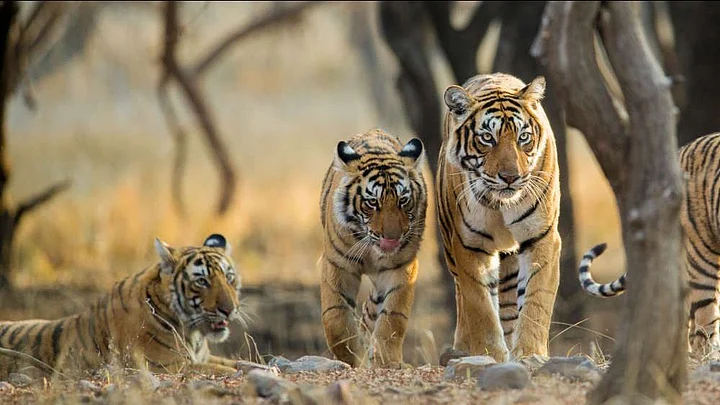India’s 2018 tiger census found a place in the Guinness Book of World Records for being the largest camera trap wildlife survey yet. Guinness World Record website stated that the fourth iteration of the survey conducted in 2018–19, “was the most comprehensive to date, in terms of both resource and data amassed”.
Reacting to the development, environment minister Prakash Javadekar wrote on Twitter, “Under the leadership of PM @narendramodi, India fulfilled its resolve to double tiger numbers 4 years before the target through #SankalpSeSiddhi.”
Giving out details of the area covered with cameras, the Guinness World Records team stated that camera traps with motion sensors were placed at 26,838 locations across 141 different sites. These cameras surveyed an area of 121,337 square kilometres.
“In total, the camera traps captured 34,858,623 photographs of wildlife (76,651 of which were tigers and 51,777 were leopards; the remainder were other native fauna). From these photographs, 2,461 individual tigers (excluding cubs) were identified using stripe-pattern-recognition software.”Guinness World Records
The site further stated that apart from unprecedented trap usage, extensive foot surveys covering 522,996 km of trails and sampling 317,958 habitat plots for vegetation and prey dung was conducted. It estimated that the total area of forest studied was 381,200 km2 and the review of data equated to around 620,795 labour-days.
The survey reportedly concluded that India’s tiger population had increased by about one-third, that is from 2,226 in 2014 to 2,927 in 2018.
“Ground surveys and camera traps recorded tiger presence in 88,985 km2 (34,357 sq mi) of forests across 20 Indian states in 2018–19. The “lion’s share” of the tigers were found in the states of Madhya Pradesh, Karnataka and Uttarakhand: together, these three Indian states were home to 1,492 tigers,” the Guinness World Record team stated.
(At The Quint, we question everything. Play an active role in shaping our journalism by becoming a member today.)
